Composition of "Visional Legend"
Yoichi Nagashima
Abstract
This is a "live" report of the composition of "Visional Legend"
with the point of view "Human Supervision and Control in
Engineering and Music" (e.g., multimedia/interactive art,
interaction between breath/music of Sho, human-media
interaction with sensor and computer music/graphics).
You can follow the "live" process of my composition with full
information/score of the work. Please enjoy !

Fig.1 : cover page of the score of "Visional Legend"
1. The Motive
As a composer and a researcher of computer music, I have
two different style of composition : "needs" oriented, and
"seeds" oriented.
This work "Visional Legend" was composed by both motivation
as a special case in my composition.
"seeds-oriented" composition
With my research and development in computer music, I have
found and developed many compositional concepts and ideas :
random, chaos, NN, GA, multi-agent multimedia, multi-layer
algorithmic composition, etc. So they became the "seeds"
of ideas in my compositions experimentally.
On the other hand, I (as an engineer) have produced many sensors
experimentally (testing new sensing devices, new technique of
noise reduction, new microprocessing system for human
performance, etc). They were also "seeds" of my research,
and were often cast as a instrument after the development.
"needs-oriented" composition
As a usual composer, my composition begins with study
of the "triggered" theme (e.g., poetry, traditional/folk instruments,
natural/strange sounds, special musical styles, etc).
On the other hand, I am requested to develop the special
sensors/instruments for musician or artists, this case is
also the "needs" oriented, but I am not a composer in
this time but an engineer and a collabolator of
the project. I cannot produce the "special instruments"
as a composer.
The Motive of the composition of "Visional Legend"
I and Tamami Tono (my friend, composer and Sho performer,
active in worldwide) have a collaboration project featuring the
bio-sensing technology in music. The Sho (Japanese traditional
instrument) player blows into a hole in the mouthpiece, which
sends the air through bamboo tubes which are similar in design
and produce a timbre similar to the pipes in a western organ.
It can produce chords as well as single notes. It is important
and interesting that the Sho player uses both directions of the
breath stream, and controls the breath pressure for expressions
in music. I have developed two styles of sensors for Sho
performance with bio-sensor technology and microelectronics,
and produced a multimedia/interactive environment for
composition/performance of computer music featuring Sho,
and composed this work.
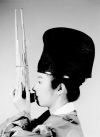
Fig.2 : Tamami Tono plays the Sho
On the other hand, I had inspired and have been keeping one
poem called (
written by Japanese poet Shimpei Kusano) for over
20 years. As a composer, sometimes I have tried to compose with
this poem by many styles of music, but all challenges have failed
because of the deep scale of the world. Finally I have
succeeded in composing with new method : computer music.
Of course, I was deeply affected with the Sho sounds performed
by Tamami Tono, and total "Japanese" atomsphere is the main
theme of this music.
(
written by Japanese poet Shimpei Kusano) for over
20 years. As a composer, sometimes I have tried to compose with
this poem by many styles of music, but all challenges have failed
because of the deep scale of the world. Finally I have
succeeded in composing with new method : computer music.
Of course, I was deeply affected with the Sho sounds performed
by Tamami Tono, and total "Japanese" atomsphere is the main
theme of this music.
2. Musical Elements
Whole sound of this work consists of Sho sound performed
by Tamami Tono and reading speech of the poem by Junya
Sasaki (Baritone). There are two types of sources : pre-composed
CD (background part) and live signal processing of Sho sound.
The performance of this workshop is partly revised version
from the premiere version in 1998, but the background CD
part and the score for performer is just the same the premiere
version.
studio work for CD part
At first, we had a recording of Sho sounds at a studio
of Keio University SFC. Of course, we used not only "musical"
(traditional) performing style but also tried many styles of
contemporary technique of performance : for example,
staccato, accent, noise, distortion and singing. Traditional
Sho performers refuse these "vulgar" manner because
they might be excommunicated, but Tamami could challenge
the possiblity of Sho sounds, so we found many new
technique and good sound materials.
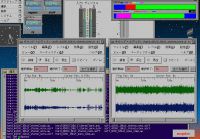
Fig.3 : sound editing in SGI Indy
The Sho sounds (single note, chords, noises, etc) were
sampled into SGI Indy workstation, edited many techniques
like "music concrete" with SGI soundeditor software,
processed by SSC Kyma signal-processing workstation
with algorithmic control by Max patches.
In my composition, I usually use these softwares for signal
processing : Kyma, Max/MSP, SuperCollider, SGI soundeditor,
and original softwares written in C language by myself
on IRIX(SGI) environments.
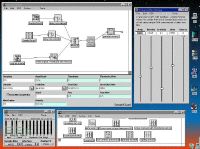
Fig.4 : signal processing patch in Kyma
The Baritone voices were recorded at a studio in Tokyo, and
also sampled into SGI Indy workstation, edited many techniques
like Sho sounds. In my composition I attach importance to
"singing/speaking voice" because I have composed over 100
choral music, but in this work I treat simply pitch-shift effect
on the reading voices.
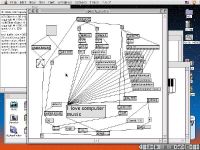
Fig.5 : algorithm sample in Max
Recorded sounds were divided into many parts, then trimmed,
re-formed with percussive envelope, pitch shifted, reversed,
re-triggered with randomly-algorithmic or programmatic
by Unix shell scripts. Finally all sound materials were
algorithmic constructed (composed) and sampled into
single AIFF file which converted to the background CD.

Fig.6 : algorithm sample in Unix shell
System and Score
This work is not only a live computer music but also a multimedia art,
so the system consists of (1) background CD part, (2) live signal
processing with Sho sounds via microphone, (3) live graphics part.
The premiere version (1998) was construted with 3 Video
players, 3 CCD cameras and original MIDI video switcher which
exchanged live visual sources. This version (2001) has another
Macintosh computer which runs "Image/ine" software, and
acts real-time image processing with MIDI information from Max
algorithm.

Fig.7 : system blockdiagram of "Visional Legend"
The live Sho performance part is fully with improvisation
of Tamami Tono, so she uses the score only as "cue-sign"
of the performance.
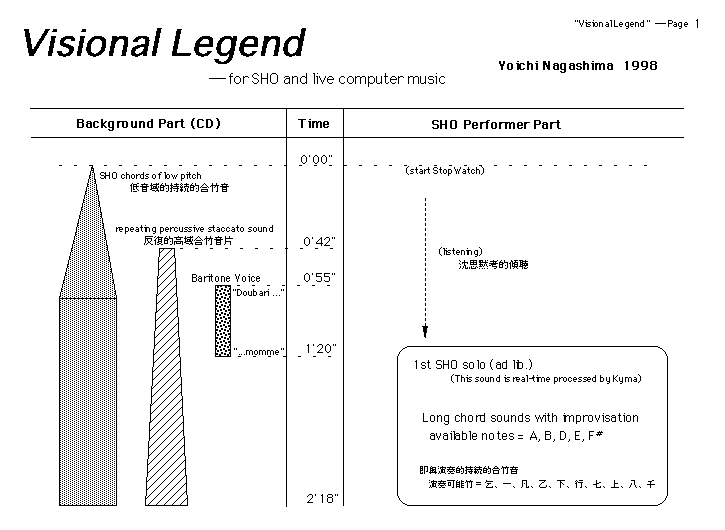

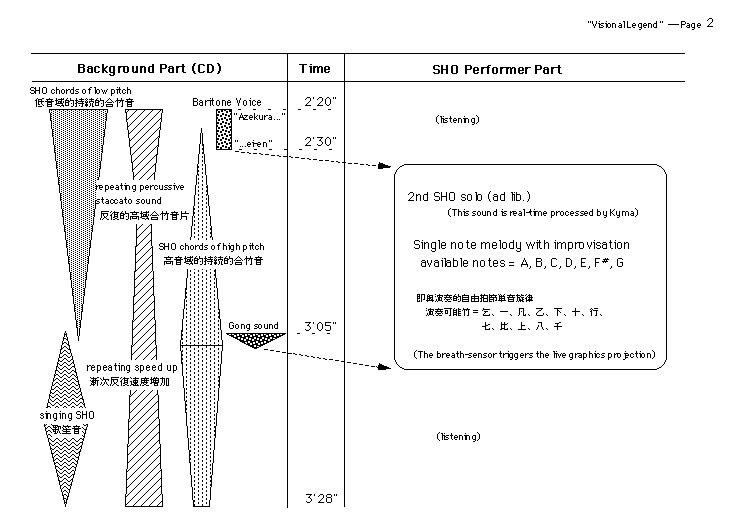

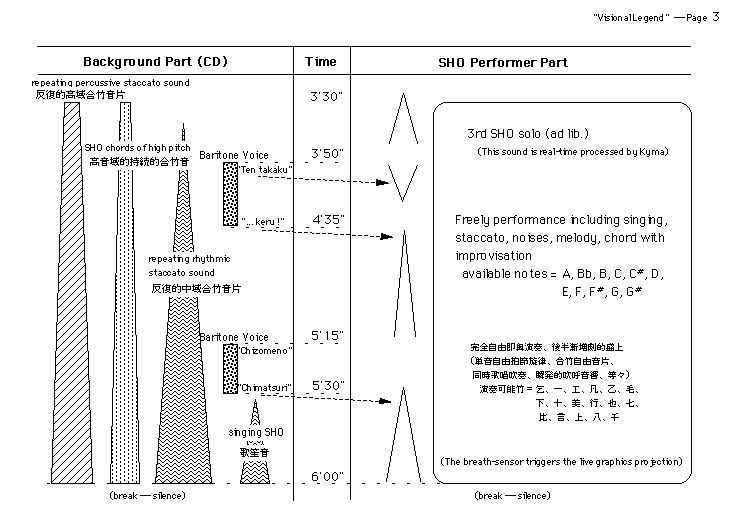

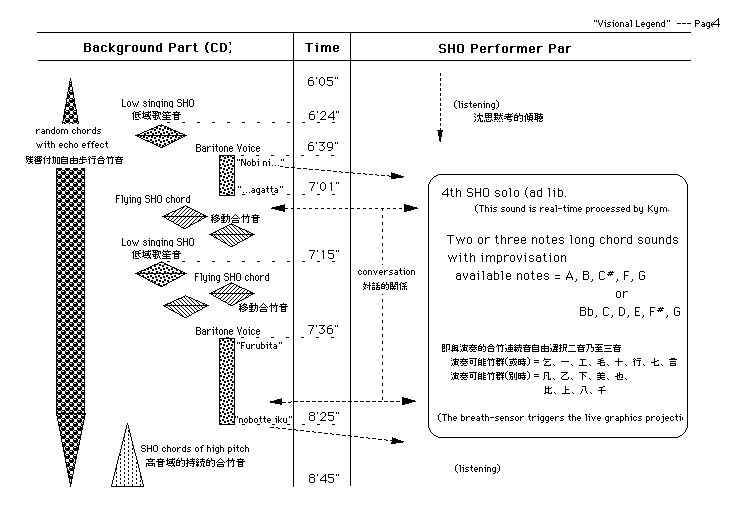

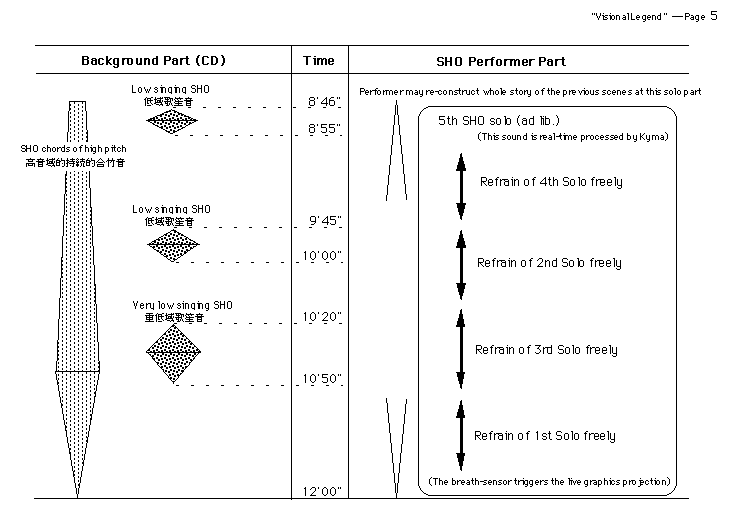
Fig.8 : score of "Visional Legend"
live processing with Kyma
Fig.9 shows the Kyma patch for "Visional Legend" in a
moment of the composition. Live Sho sound is real-time
sampled and signal-processed in these modules.
Many parameters in signal processing are assigned
to many MIDI parameters, and real-time controlled
from Max.
Because this work is using pre-composed CD part,
this live processing by Kyma is very simple and
compact compared
with other my works (live processing only).
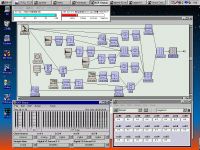
Fig.9 : Kyma patch for "Visional Legend"
Fig.10 shows one sample of signal processing block
which acts as "real-time granular sampling" effects.
In this patch, there are 29 grains (smoothly-enveloped,
live-sampled sound elements) and rendomly re-generated
with [GrainDur] [GrainDurJitter] [Density] [PanJitter]
parameters via MIDI "control change" messages.
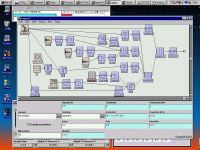
Fig.10 : "granular sampling" sample in Kyma
3. Graphical Elements
I have been creating many works of multi-media art,
but in almost cases I have collaborators in creating
graphical part of the work, because I am a composer.
But the first version of "Visional Legend" (1998) was composed
only by myself including the graphical part of the work (3 video
images and slide-show CG), it was a rare case.
In the newest version of "Visional Legend" (2001), I selected
2 collaborators, Misaki Kato and Masumi Ohyama,
to create the graphical part of this work originally.
visual source
At first step, I showed the background CD part and the
poem to
the collaborators,
and we had a discussion of the image and atomosphere.
Then, we go on a small trip to one temple, and took
photos and videos of JIZOs etc.
The captured and processed images from them are used
as visual source of the graphical part os this work.
to
the collaborators,
and we had a discussion of the image and atomosphere.
Then, we go on a small trip to one temple, and took
photos and videos of JIZOs etc.
The captured and processed images from them are used
as visual source of the graphical part os this work.
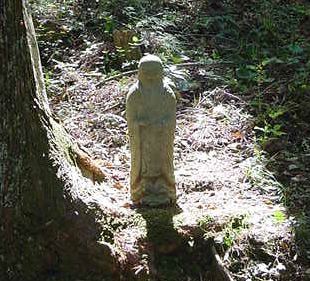
Fig.11 : many many JIZOs
live video switching
Fig.12 shows the system block diargam of the first
version of "Visional Legend" (1998) .
In this system, I used original "MIDI video switcher" for
live control of pre-created graphic contents and live
video images from 3 CCD cameras. This was the "analog"
processing style of the graphcal part.

Fig.12 : system of old "Visional Legend" (1998)
Image/ine, QT movie, Firewire
The newest version of "Visional Legend" (2001) has evolved
to "digital" processing not only in musical part but also
in graphical part of the work completely.
I choosed one software called "Image/ine" with Macintosh.
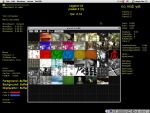

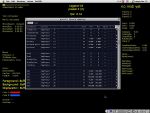
Fig.13 : screen shot of Image/ine
We had also recorded the QT movies of Tamami Tono
performing Sho, and these movies are used as elements
of the graphical part of the work.
I am challenging not only using QT movie but also live
image of CCD camera via Firewire (IEEE1394, iLink)
with Image/ine, so there remains very little possiblity
of using live CCD information in the performance
in the Kassel concert 2001.
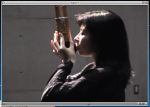

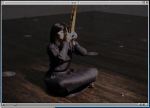

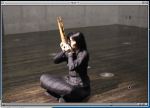
Fig.14 : QT movie of Tamami's performance
4. Interactive Elements
In my composition, I prefer to choose "live" computer music
rather than "fixed" (sequencer = playback only) style.
Thus, there must be interfaces between human performer and
live computer system, like "instruments" in traditional music.
The "interface" is very important in "interactive-art" like music,
and I have been challenging to research/experiment/develop
new interfaces with sensor technology and microelectronics.
bi-directional breath sensing
Normally the Sho player must keep sitting calmly,
so I cannot use popular interfaces like foot pedals, foot
volumes and optical beam sensing the movements of arms.
On the other hands, the breath stream of each bamboo tube
is very critical, and it is very difficult to detect the value of
the bi-directional pressures for each bamboo pipe.
I found that normal Sho uses 15 bamboos with reed but 2
bamboos are used only for decoration, not used for sound generation.
So I and Tamami replaced one bamboo with the "sensing pipe"
which connected a small air pressure sensor module. This sensor
detects the bi-directional air pressure value of the "air room" of
the bottom of the Sho.
Fig.15 shows the pressure sensor and the Sho.
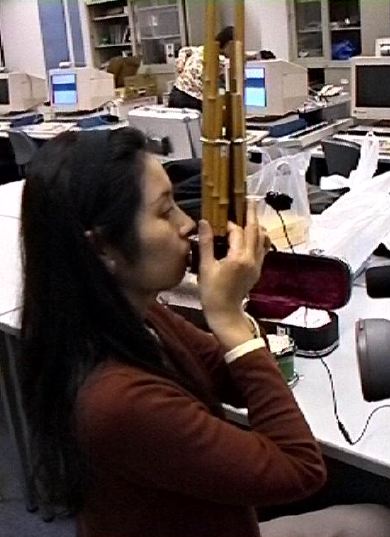



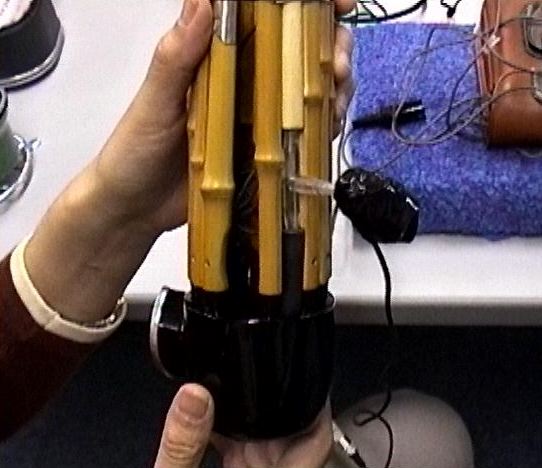
Fig.15 : Sho with pressure sensor
A/D, AKI-H8 and MIDI
This is not a report of engineering but a report of creation/design.
Fig.16 - Fig.22 shows the process of development of the sensing system
all by myself alone. For me, this is a part of my composition
like programming, image processing and traditional score-writing.

Fig.16 : air-pressure sensor module [fujikura]

Fig.17 : sensing circuit
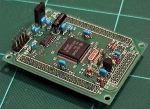
Fig.18 : 32bit microprocessing card AKI-H8
(containing A/D, SIO, RAM, FlashROM, CTC, etc)

Fig.19 : A/D to MIDI circuit

Fig.20 : developing workbench
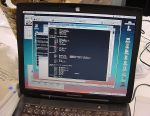
Fig.21 : CPU programming (assembler) in MSDOS

Fig.22 : MIDI output of breath sensor
5. Performance
The rehearsal is most important process in live computer music,
because so many parameters can be changed on stage in rehearsal.
The "fixed" music like CD, MD, DAT, DVD cannot be changed
in rehearsal, with only balance setting of PA. The sequencer style
is also difficult to change whole the music.
But it is easy for me to arrange/trim/change the algorithm and
perameters of the music in rehearsal time, and the music
changes drastically in short time.
Max control via MIDI
All live control is generated by Max in the performance
with receiving the MIDI output of Sho breath sensor.
The breath sensing information from Sho is real-time
pattern-matched and recognized into "performance
information", and they trigger some changes of sounds
and graphics, they controls continuously as parameters of signal
processing and color information in visual effect, etc.
Fig.23 - Fig.27 shows the original Max patches for "Visional Legend".
In the performance, I am at the computer desk and control the
main patch of Max in real time as another performer.
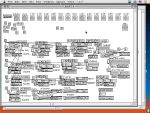
Fig.23 : main Max patch in [run mode]

Fig.24 : main Max patch in [edit mode]
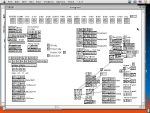
Fig.25 : sub patch for Image/ine [run mode]
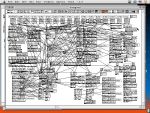
Fig.26 : sub patch for Image/ine [edit mode]
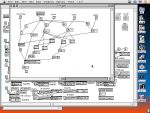
Fig.27 : universal time-variant subpatch
"chance" and "improvisation"
As you know when you read/study the score of "Visional Legend",
there is no "fixed" note or chord in the Sho performer's part.
The Sho part of this work may be played fully improvisation,
so the Sho performer must "listen, feel, create" the musical
images and play the Sho with bachground CD sound part
and live-generated graphics.
I request the "human supervision and control in music"
to the performer in this work, and construct the environment for real-time
composition and performance scientifically (computer music).
In my algorithmic composition, I usually use many "random"
objects in Max patch which control the music totally.
This means not that my music is random music or statistic
music, but that my music stands upon (traditionally) tonal
atmosphere or simple style/theory in music.
I never use the "random" object directly to generate musical
parameters, I always add the "musical filtering" algorithm
upon the randomness, it may be called "God in music world".
Of cource, this is just the same in traditional composition.
For example, the direct output of "random" object or sensor
MIDI information is an integer number (0-127), so it generates
12-tone chromatic scale or atonality when used as a note number
parameter of MIDI.
On the other hand, the DTM (sequencer) composer sets each
note data on the score, so the scale or tonality is fixed in each
scene in music.
But I usually use the "weighten table" algorithm in everywhere
in my composition. This table converts input integer data
into many kinds of musical parameters, but the probablity
or weight of the conversion may be changed easily in real-time.
So, the scale or tonality is flexible and changable with chance
or performance (sensor) in every moment in music.
"silence" as music
I use a special video projector for the performance of "Visional Legend".
Normal video projectors cannot be shut-down immediately, because
the lamp must be cool-down with the fan avoid heat-broken.
But in the final part of this work, only the Sho sound remains
in deeply silence, so I choose the special video projector which
may be shut-down in any time. Thus, you (also Tamami and myself)
can enjoy the perfect silence with the natural Sho sound (of course,
the PA is shut-down this moment).
This is different concept with John Cage, but I think that the silence
is rich music with Japanese traditional culture.
References
- Douglas Hofstadter, "Godel, Escher, Bach: An Eternal Golden Braid",
1980, Pulitzer Prize Winner
- Marvin Minsky, "The Society of Mind",
1988, Simon & Schuster
- Roger Penrose, "The Emperor's New Mind"
--- Concerning Computers, Minds, and the Laws of Physics ---,
1989, Oxford University Press
- Richard Moore, "Elements of Computer Music",
1990, PrenticeHall
- Roger Penrose, "Shadows of the Mind"
--- A Search for the Missing Science of Consciousness ---,
1995, Vintage Science
- Curtis Roads, "The Computer Music Tutorial",
1996, MIT Press
- Donald Gillies, "Artificial Intelligence and Scientific Method",
1996, Oxford University Press
- Curtis Roads, "Musical Signal Processing"
--- Studies on New Music Research, 2 ---,1997, Swets & Zeitlinger
- Charles Madden, "Fractals in Music"--- Introductory Mathematics for Musical Analysis ---,
1999, High Art Press
- Y. Nagashima, "Sensors for Interactive Music Performance" [ICMC2000 Workshop]
- Y. Nagashima, "Real-Time Interactive Performance with Computer Graphics and Computer Music"[7th
IFAC/IFIP/IFORS/IEA Symposium on Analysis, Design, and Evaluation of Man-Machina Systems], 1998
- Y. Nagashima, "BioSensorFusion:New Interfaces for Interactive Multimedia Art" [ICMC1998]
- Y. Nagashima, "'It's SHO time' --- An Interactive Environment for SHO(Sheng) Performance" [ICMC1999]
- Y. Nagashima, Sensor@ComputerMusic [IPSJ Tutorial with Atau Tanaka]
- Y. Nagashima, "Musical Concept and System Design of 'Chaotic Grains'": Sensor control for live chaotic music
[SIGMUS of IPSJ 1993]
- Y. Nagashima, "PEGASUS-2 : Real-Time Composing Environment with Chaotic Interaction Model": Integrated
computer music system containing sensor systems [ICMC1993]
- Y. Nagashima, "Chaotic Interaction Model for Compositional Structure": Sensor control for live chaotic music
[IAKTA workshop 1993]
- Y. Nagashima, "Multimedia Interactive Art : System Design and Artistic Concept of Real-Time Performance with Computer
Graphics and Computer Music": Integrated computer music system containing sensor systems, some applications
[HCI 1995]
- Y. Nagashima, "A Compositional Environment with Interaction and Intersection between Musical Model and Graphical Model
--- Listen to the Graphics, Watch the Music ---" Integrated computer music system with multimedia
[ICMC1995]
-
The symposium "Human Supervision and Control in Engineering and Music"
-
Yoichi Nagashima HomePage ( written in Japanese, sorry... )
-
Tamami Tono HomePage
-
Kyma
-
Max
-
Image/ine
-
SuperCollider













































